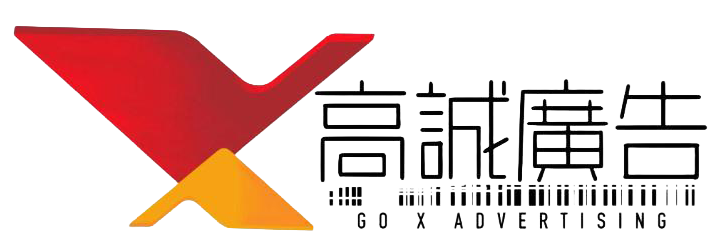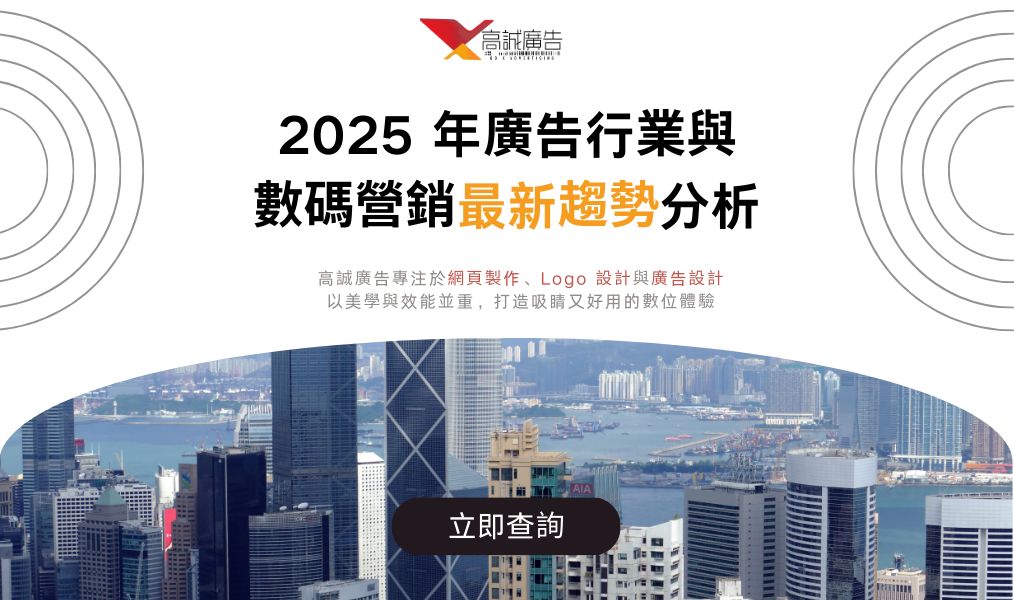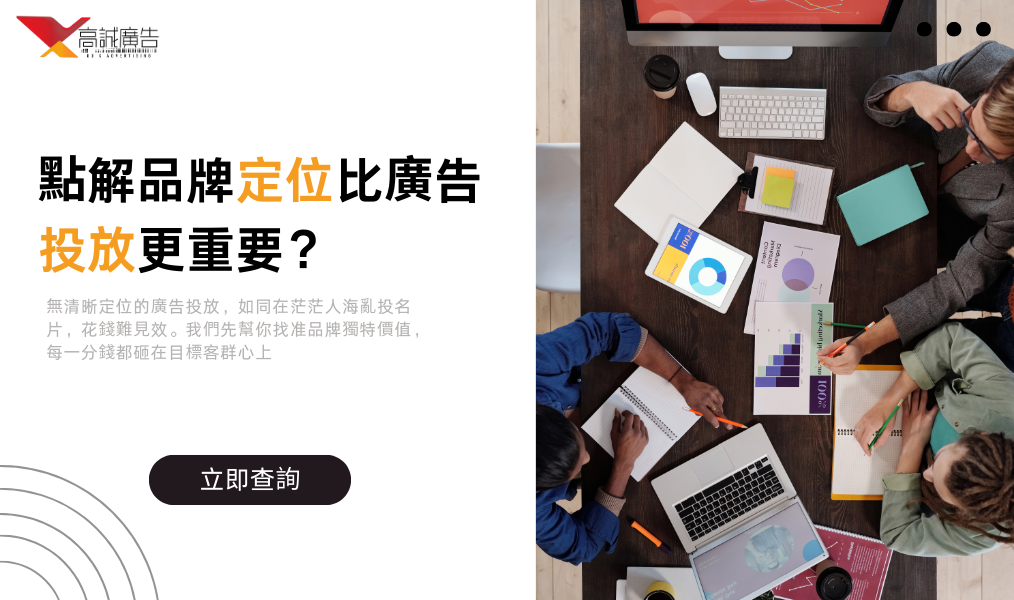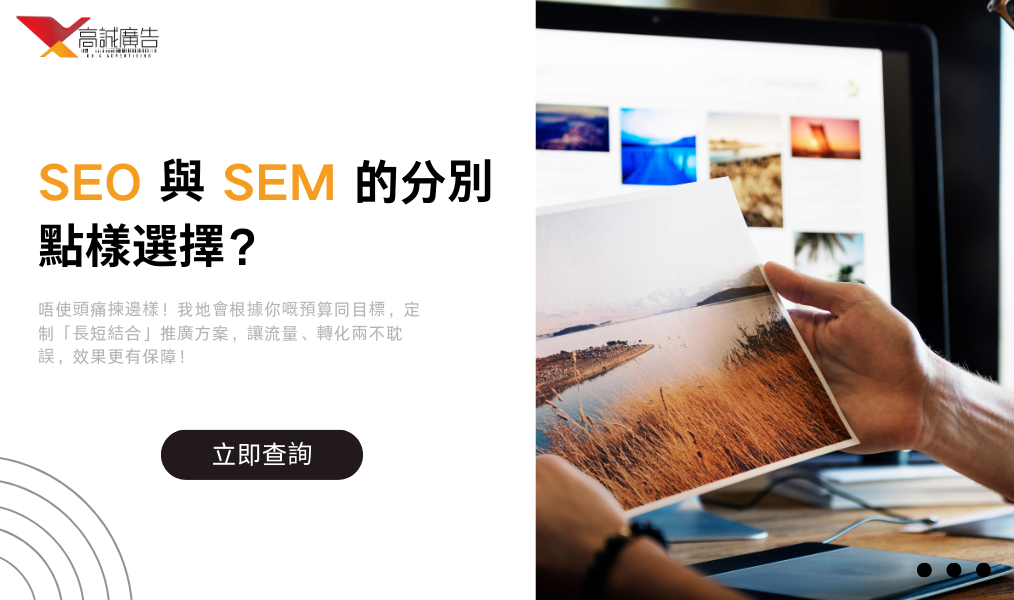2025 Advertising & Digital Marketing Trends
With rapid changes in technology and consumer behavior, the advertising industry and digital marketing strategies have entered a new phase. For businesses, keeping up with industry trends isn’t just about choosing the right channels — it’s the key to building brand competitiveness. This article summarizes the latest trends for 2025 to help you grasp the market pulse and make smarter marketing decisions.
1. AI-powered ad delivery becomes mainstream
Artificial Intelligence (AI) is no longer just a concept — it’s the core engine of digital advertising:
- Automated delivery and optimization: AI analyzes user behavior in real time, automatically adjusts targeting strategies, and improves CTR and conversions.
- Creative generation: AI copywriting and image tools can rapidly produce multi-version creatives, reducing production costs.
- Predictive analytics: AI predicts consumer behavior to help brands seize opportunities early.
Mastering AI tools not only boosts efficiency but also helps precisely target potential customers.
2. Short-form video dominates brand communication
Short videos (15–60 seconds) continue to explode on social platforms, especially TikTok, Instagram Reels, and YouTube Shorts:
- Consumers prefer content that is quick, visual, and entertaining.
- Brands can showcase product features or stories through short videos to increase engagement.
- Studies show short video ads are 3–5x more memorable than static image ads.
Trend tip: Short-form video must be part of your content strategy — don’t rely solely on text-and-image ads.
3. Personalization and data-driven marketing upgrade
Consumers are increasingly resistant to generic ads and expect tailored experiences:
- Precision remarketing: Use browsing behavior and purchase history to automatically push relevant ads.
- Interactive ads: Quizzes, polls, and AR filters increase participation and engagement.
- Omnichannel integration: Cross-platform tracking and delivery ensures seamless user experiences.
The more personalized the journey, the higher the conversion rate and brand loyalty.
4. Social commerce merges with instant purchasing
Social platforms are becoming new e-commerce entry points:
- Consumers can watch and buy simultaneously, with ads linking directly to product pages.
- Brands leverage KOL/influencer marketing plus ads to amplify results.
- The “short video + social commerce” model is reshaping the traditional purchase funnel.
Trend tip: Mere exposure isn’t enough — embed conversion flows into content experiences.
5. Sustainability and social responsibility ads matter more
Consumers care more about brand values and social responsibility:
- Campaigns highlighting environmental,公益, or social topics build trust faster.
- Integrity and transparency are now key parts of brand competitiveness.
Reminder: Ads don’t just sell products — they communicate values.
What 2025 trends show:
- AI + automation make ads more accurate and efficient
- Short video and social commerce are the new traffic gateways
- Personalization and omnichannel integration boost conversion
- Brand values and social responsibility determine long-term competitiveness
Brands that adapt will stand out in a highly competitive market.
Why Brand Positioning Matters More Than Ad Spend
Published: Dec 2024 | Category: Brand Strategy
When a company plans to promote a product or service, the first thought is often “run ads.” Ads can certainly bring exposure, but without clear brand positioning, it’s like building a tower without a foundation — the effect rarely lasts. In fact, brand positioning is the core behind ad performance and can be even more important than ad spend itself.
1. Positioning defines who your customers are
Ads bring traffic, but “who will actually stay?” depends on your positioning.
- If you emphasize “great value,” you’ll attract price-sensitive audiences.
- If you emphasize “professional premium,” you’ll naturally appeal to quality-seeking customers.
Traffic converts into stable customers only when positioning is clear.
2. Positioning amplifies or weakens ad performance
Imagine two similar companies:
- Company A: Clear positioning — “Local Hong Kong team, practical and reliable.”
- Company B: No clear positioning, relies only on catchy ad slogans.
Result: A’s ads convert much better than B’s, because consumers quickly understand “why choose you.”
3. Positioning builds long-term trust
Ad spend is a short-term strategy — money in, quick results; stop spending and exposure disappears.
Brand positioning is a “long-term asset”:
- Consumers remember you because of your positioning.
- Even without ads, word-of-mouth and brand impression persist.
Ads are the “catalyst”; positioning is what brings customers back long-term.
4. Without positioning, ads become a “money-burning game”
Without clear positioning, your ads:
- Need bigger budgets to fight for attention.
- May have high CTR but low conversion.
- Ultimately deliver poor ROI.
Conversely, clearly positioned brands achieve greater efficiency with fewer ad resources.
5. The professional role of an ad agency
A professional agency doesn’t just run ads — it first helps clients build positioning:
- Identify market advantages
- Define a clear brand image
- Amplify the message through advertising
In short, positioning is the strategy; advertising is the tactic. If your strategy is wrong, even perfect tactics won’t yield long-term results.
Ads help more people “see you,” but positioning is what makes customers “remember you.” To maximize ad value, first clarify what your brand stands for and who you aim to attract.
SEO vs SEM: What’s the Difference and How to Choose?
Published: Dec 2024 | Category: Digital Marketing
Many companies want to acquire more customers online, and the first question is often: should we do SEO or SEM?
SEO and SEM are both crucial tools in digital marketing, but they differ in principles, results, and suitable scenarios. Below is a clear breakdown to help you choose the best-fit approach for your business.
1. What is SEO?
SEO (Search Engine Optimization) improves your website’s organic rankings on Google, Yahoo, Bing, etc., through optimizing site structure, content, speed, keywords, and more.
Features:
- No direct ad spend (but requires optimization and content investment)
- Results appear slowly (typically 3–6 months+)
- Stable and lasting — once ranking rises, it brings long-term traffic
- Helps build brand trust
Best for: Companies investing long term and building authority.
2. What is SEM?
SEM (Search Engine Marketing) typically refers to paid search ads (e.g., Google Ads). Set keywords and budget — your ads appear immediately at the top of results.
Features:
- Fast results — traffic the same day you start
- Precise budget control (daily, CPC-based)
- Ideal for short-term promotions and campaigns
- But when ads stop, traffic disappears instantly
Best for: Companies needing immediate results or short-term sales.
3. Key differences between SEO and SEM
| Item |
SEO |
SEM |
| Cost |
Initial investment in people/content/tech |
Paid per click or impression |
| Time to see results |
Slow (3–6 months+) |
Fast (works immediately) |
| Longevity |
Stable and long-term |
Stops when ad spend stops |
| Trust |
Organic ranking, higher credibility |
Marked as ads, relatively lower trust |
| Best scenarios |
Brand building, long-term traffic |
Short-term promotions, instant traffic |
4. Which should you choose?
If you want long-term brand building and stable traffic
Invest in SEO — slower to see results, but long-term returns.
If you have short-term campaigns or urgent sales goals
Use SEM — get traffic and inquiries immediately.
Best approach: Combine SEO + SEM
- SEM brings immediate traffic and helps test market response
- SEO builds stable long-term traffic and reduces reliance on ads
Like running a restaurant: SEM = flyers bring instant visitors; SEO = gradually build reputation and loyal customers.
SEO and SEM aren’t either/or — align them with your goals and resources. SEM helps you move “fast”; SEO helps you stay “steady.” For SMEs aiming to stand out online, use SEM for short-term acquisition and SEO for long-term growth.



